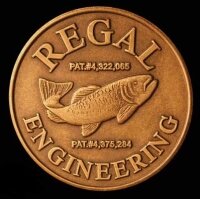
After World War II Merton Parks taught himself how to tie flies. There were not many commercial companies churning out flies, so Merton started a small tying business out of his basement. He was unhappy with his job at Northwest Paper Company in Cloquet, Minnesota and was much more happy tying flies. So in 1953 he moved his family from Minnesota to Gardner, Montana where he opened Parks’ Fly Shop. The shop is still there today and owned by Merton’s son Richard. They still specialize in custom flies and have some terrific tyers filling the bins. Check out their fly selection on their website.
Merton created Parks Salmonfly in 1954. The fly is a Sofa Pillow alternative and definitely one of the best. Dan Bailey called this pattern one of the best adult stonefly imitations, according to the book Trout Country Flies. One of the custom tyers at Parks’ Fly Shop and one of my favorite fly tyers, Doug Korn, says, “Fish it damp as often as floating high, especially at the tail end of the salmonfly hatch.” Richard Parks shows us how to tie this classic pattern in the video below.
Hook: Mustad 9671 2xl nymph, #2-8 with 6 most common
Thread: Heavy and black: Gudebrod G, flat waxed mono, Kevlar or 3/0 Uni
Tail: natural brown bucktail, long length of body
Body: tangerine orange Red Heart Acrylic yarn wound over Duco cement for durability
Palmer hackle: Brown or furnace saddle, clipped even with the gape on sides and bottom, basically flat on top.
Wing: Natural brown bucktail, slightly longer than the tail, full.
Hackle: 3-4 strung dark brown or furnace saddles (or mix). Choose hackle with little web. If you have a high-grade neck or saddle with web-less feathers in sufficient size, use two feathers. Wrap each feather individually, filling in gaps left by the previous hackle(s).














